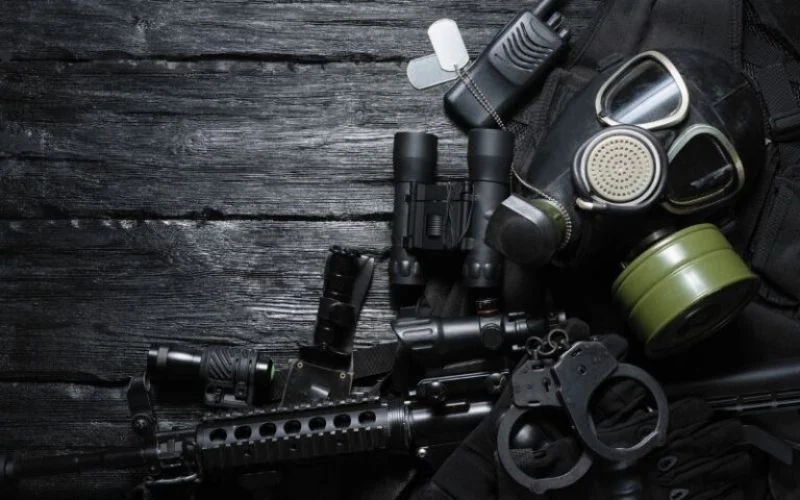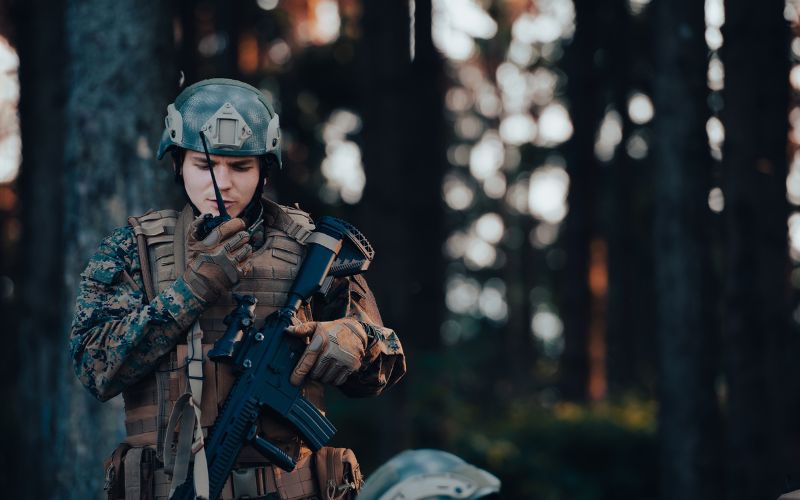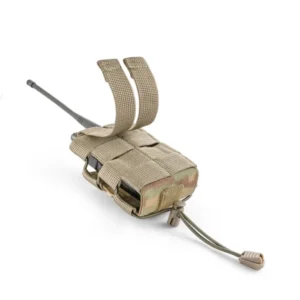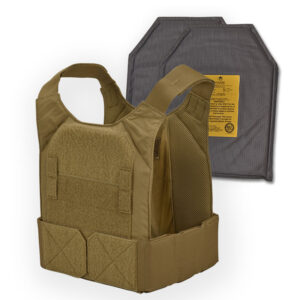Military Equipment & Advanced Technology

When considering military equipment, you probably envision powerful weapons and intimidating armored vehicles. But there’s a lot more to it than just firepower. Consider the advanced communication gear that keeps units connected or the sophisticated surveillance systems that provide critical intel. Then there are the logistics and supplies that guarantee troops have what they need when needed. Each piece of equipment, from unmanned drones to protective gear, plays an essential role in the bigger picture. As you explore further, you’ll discover how these elements combine to form a cohesive and efficient force.
In the modern era, the military landscape is rapidly evolving, driven by technological advancements reshaping warfare’s nature. From cutting-edge weaponry to sophisticated surveillance systems, military equipment and advanced technology are at the forefront of national defense strategies. Here are the latest trends and innovations, exploring how they enhance operational efficiency and effectiveness.
The Evolution Of Military Equipment
The history of military equipment demonstrates how people have harnessed their creativity to develop more effective technology for warfare. Early weapons, such as spears and swords, have given way to advanced firearms, drones, and cyber warfare tools. This evolution reflects the changing dynamics of warfare, where speed, precision, and stealth are paramount.
Today’s military forces have sophisticated tools to provide a strategic edge. Advanced combat vehicles, state-of-the-art firearms, and high-tech protective gear such as:
- Armor Kit
- Protective clothing
- Protective gloves and combat boots
- Heat-resistant T-shirts
These are just a few examples. These innovations improve combat effectiveness and enhance soldiers’ safety and survivability on the battlefield.
What Are The Essential Military Equipment & Advanced Technology?
The modern battlefield has evolved significantly over the decades, and so has the military equipment that powers the tactical operations of armed forces worldwide.
1. Unmanned Systems And Drones
Unmanned systems, particularly drones, have revolutionized military operations. These versatile machines are used for surveillance, reconnaissance, and even offensive missions. Their ability to operate in life-threatening environments without risking human lives makes them invaluable assets in modern warfare.
Drones come in various shapes and sizes, from small quadcopters for reconnaissance to larger, weaponized models capable of precision strikes. They provide real-time intelligence and situational awareness, enabling commanders to make informed decisions quickly. The integration of AI in drones further enhances their capabilities, allowing for autonomous operations and advanced data analysis.
2. Cyber Warfare And Electronic Warfare

Cyber warfare has become critical as digital technology becomes increasingly integral to military operations. Cyber attacks can cripple infrastructure, disrupt communications, and compromise sensitive data, making cyber defense a top priority for modern militaries.
On the other hand, electronic warfare involves using the electromagnetic spectrum to disrupt enemy communications methods and radar systems. Advanced electronic warfare systems can detect, jam, and deceive enemy signals, providing a significant tactical advantage. These technologies are essential for maintaining information superiority in the digital age.
3. Advanced Armor And Protective Gear
The development of advanced armor and protective gear has significantly improved soldier survivability. Modern body armor, made from Kevlar and ceramic composites, offers enhanced protection against bullets and shrapnel while remaining lightweight and flexible.
Innovations in protective gear extend beyond body armor. Advanced helmets with integrated communication systems, ballistic shields, and exoskeletons are becoming standard issues. These enhancements protect soldiers, improve their mobility and endurance, and enable them to perform better in high-stress environments.
4. Military Uniforms
Military uniforms are more than identification. Designed for endurance, camouflage, and comfort, modern army equipment features moisture-wicking materials, reinforced stitching, and built-in MOLLE systems that accommodate modular attachments. Pieces like pants, hoodies, caps, beanies, and balaclavas are designed for use in extreme weather conditions, providing both mobility and protection.
Bulletproof vests and plates are essential for safeguarding soldiers in high-risk areas, while sleeping bags provide crucial rest when deployed or camping in harsh environments.
5. Artificial Intelligence And Machine Learning
Artificial Intelligence (AI) and Machine Learning (ML) transform military operations by enabling smarter decision-making. AI algorithms can analyze vast amounts of data to identify patterns and predict enemy movements, enhancing situational awareness and strategic planning.
ML, a subset of AI, allows systems to learn from experience and improve over time. This capability is crucial for autonomous vehicles, predictive maintenance, and cyber defense applications. By leveraging AI and ML, militaries can develop more adaptive and resilient systems that stay ahead of emerging threats.
6. Surveillance And Reconnaissance Technologies
Surveillance and reconnaissance are critical components of military operations. Advanced technologies, such as high-resolution satellites, UAVs, and ground-based sensors, provide comprehensive situational awareness. These systems gather and transmit real-time data, allowing informed decision-making and timely responses.
Modern surveillance technology encompasses night vision, thermal imaging, and radar systems that are capable of detecting hidden threats. Integrating AI in these systems enhances their capabilities, enabling automated threat detection and assessment. These advancements ensure that military forces maintain a tactical advantage in a wide range of operational environments.
7. Communication Systems And Networks

An effective communication system is the backbone of military operations. Advanced communication systems and networks enable secure, reliable, and real-time communication across all levels of command. These systems are designed to withstand battlefield challenges, including electronic warfare and cyber attacks.
Modern military communication systems utilize encrypted data links, satellite communications, and mobile networks to ensure seamless connectivity. Developing robust and resilient communication infrastructure is essential for coordinating complex operations and maintaining operational integrity.
8. Autonomous Vehicles And Robotics
Autonomous vehicles and robotics are set to transform future military technologies. These technologies offer new capabilities in logistics, reconnaissance, and combat.
Ground control starts with heavily armored tanks and tactical trucks, providing firepower and mobility on the battlefield. For fleet and cargo transportation, trailers and logistics vehicles are a must. In the air, military aircraft offer reconnaissance, rapid deployment, and aerial strike capabilities. Ships, meanwhile, facilitate naval warfare and amphibious assaults across seas.
Every asset plays a crucial role in a comprehensive military strategy, facilitating combined arms operations that integrate air, land, and sea forces.
9. Hypersonic Weapons
Hypersonic weapons, which can achieve speeds exceeding Mach 5, signify a substantial leap forward in military technological capabilities. These weapons can strike targets with unprecedented speed and precision, making them difficult to detect and intercept.
Several military powers are focusing on developing hypersonic missiles and glide vehicles, as they can overcome existing missile defense systems. Hypersonic technology in military forces will transform modern warfare by providing a strategic advantage in both offensive and defensive operations.
10. Weapons and Defense Systems
Arms are still the core of any military. Contemporary knives, ammunition, and personal weapons are designed for precision and reliability. Advances in this field ensure that soldiers are well-positioned to react quickly to threats while minimizing risks.
Bulletproof technology, remote weapon stations, and targeting systems are innovations that have transformed the face of warfare today, enabling more strategic and intelligent engagements.
Conclusion
The rapid development of military gear and technology highlights the importance of continually generating new ideas to stay ahead. From drones and cyber warfare to AI and hypersonic weapons, these technologies are reshaping the battlefield and enhancing the capabilities of modern military forces.
For those interested in exploring the latest in tactical gear and advanced military equipment, Chase Tactical offers a wide range of products designed to meet the demands of today’s military professionals. Embracing these innovations ensures that military forces are well-prepared to face future challenges, safeguarding national security and global stability.
Frequently Asked Questions
What do Molle systems provide in military equipment?
MOLLE (Modular Lightweight Load-carrying Equipment) systems enable troops to attach pouches and accessories to their uniforms or vests, making it easier to customize and become more efficient.
Which nations are at the forefront of developing military equipment?
Countries such as the United States, China, and Russia are acknowledged leaders, investing billions in cutting-edge defense technology and training.
Why is weather resistance necessary in military uniforms?
Weather-resistant uniforms shield personnel from unfavorable climates, maintaining operational efficiency and comfort in hostile climates.


